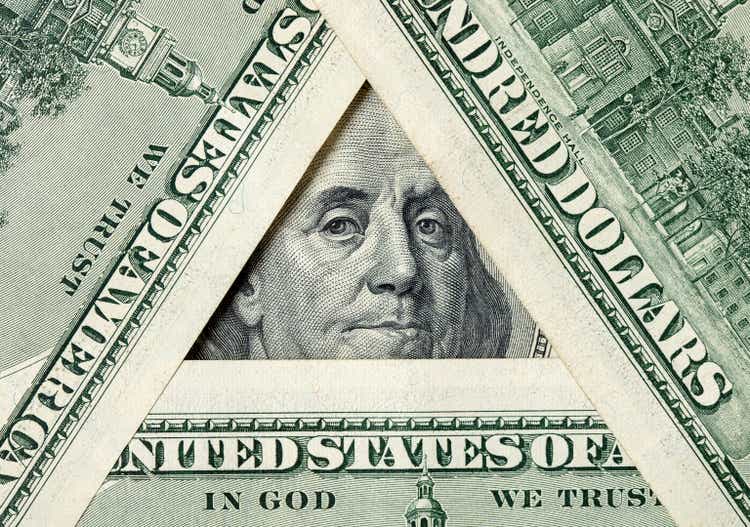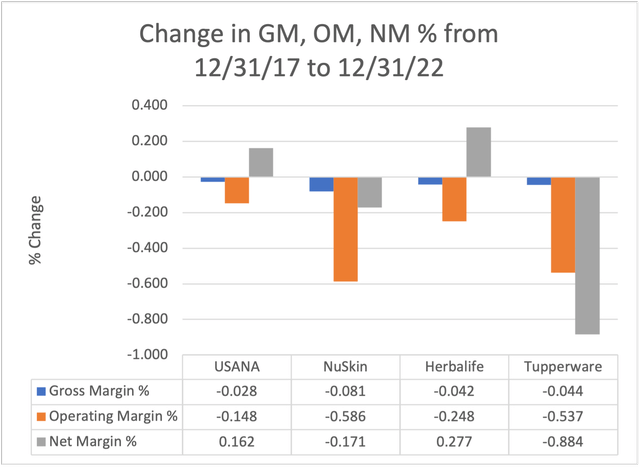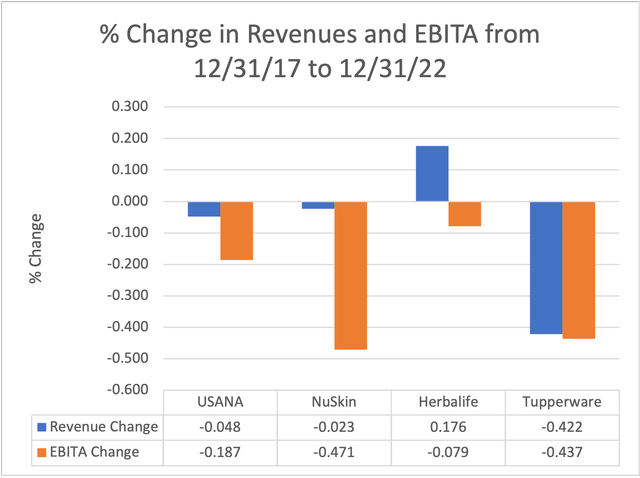Multilevel Marketing: 2018 And Beyond?

Summary
- This isn't your grandmother's environment for growing an MLM company.
- How long can Net Margins be sustained with declining Gross Margins and Operating Margins?
- The future of public MLM companies is tied inevitably and inextricably to industry-wide issues.
Cimmerian/iStock via Getty Images
The more 2020 fades in the rear view mirror the more it looks like an aberration, an outlier, a bad memory. But not a bad memory for multilevel marketing (MLM). In fact, it is the memory public MLM companies want to cherish because if treated as an outlier the industry looks, since 2018, like a wilting piece of lettuce.
Let us do the numbers. Some finance folks love EBITA; for me, I prefer tracking margins. Large margins, relative to other consumer products companies, are a hallmark of MLM companies. Let's compare these to, for example, Procter & Gamble (PG). P&G's gross margin percent typically fall in the high 40s to low 50s range, with operating margin running around 20%, give or take, and net margin 4%-5% lower. MLM companies like Herbalife (HLF), Nu Skin (NUS), USANA (USNA), and Tupperware (TUP) have much higher gross margins, with lower operating margins, and lower net margins.
In spite of help from the pandemic, since the end of calendar year 2017 gross margins and operating margins at these four public MLM companies have all declined. Net margin declined for two of the four. The chart below shows the percent change in the three margins for the trailing twelve months (TTM) for 12/31/17 and 12/21/22. While I just a marketing professor, even I know that net margins sooner or later will reflect changes in gross margin and operating margin.
% change in Gross Margin, Operating Margin, and Net Margin 2017-2022 (macrotrends.net, finbox.com)
For my colleagues in finance let us give EBITA its due. Then chart below shows the percent change in revenue and percent change in EBITA for all four firms during the same period. In each company EBITA declined, even though in the case of Herbalife revenues increased.
% change in Revenue and EBITA, 2017-2022 (macrotrends.net, finbox.com)
Why do I bring this data up now (other than just to be irritating)? The Direct Selling Association (DSA), the mouthpiece for the MLM industry annually releases industry data but thus far, not for 2022. Why? Could it be that the entire MLM industry in the US continues to decline as a percent of US Retail Sales? I suspect so, not just because of the data above but also because the UK DSA is already reporting:
- A 20.7% decline in “direct sellers” in the UK from 2021 to the start of 2023
- A 9% decline in “economic contribution” in the UK during the same period
- An expectation that “The Direct Selling and Marketing industry is expected to perform poorly in the coming years. Industry revenue is anticipated to decline.”
In the past seven years multiple members of the DSA have faced enforcement action by the Federal Trade Commission (FTC) – Vemma, Advocare, and Neora, the first two caved and left the industry after paying penalties and the last case is ongoing. The FTC also has an ongoing case against Success by Health (not a DSA member). The State of Washington successfully prosecuted LuLaRoe and the Department of Justice succeed with a criminal prosecution against Infinity2Global (I2G). While the later may be a relative unknown MLM, those who founded and promoted I2G had long ties with the industry.
And then comes the growing chorus of antiMLM social media activists. Pick any social media platform and you will find articulate critics from among the industry’s own army of former recruits. No one tells a story quite like someone who lived the story.
So we will wait until the DSA massages whatever it needs to massage before releasing the 2022 data. In the meantime we will have to be content with watching how public MLMs actually perform.
This article was written by
Disclosure: I/we have no stock, option or similar derivative position in any of the companies mentioned, and no plans to initiate any such positions within the next 72 hours. I wrote this article myself, and it expresses my own opinions. I am not receiving compensation for it. I have no business relationship with any company whose stock is mentioned in this article.
